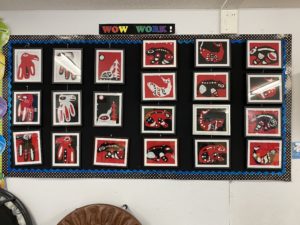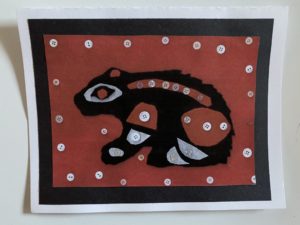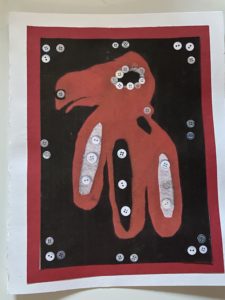Educators respect and value the history of First Nations, Inuit and Metis in Canada and the impact of the past on present and the future. Educators contribute towards truth, reconciliation and healing. Educators foster a deeper understanding of ways of knowing and being, histories, and cultures of First Nations, Inuit and Metis.
During EDUC 490 I really wanted to make sure that I was careful to incorporate Indigenous content as much as I possibly could. Being in a school that is so dedicated to incorporating the First Peoples Principles of Learning (FPPL) really allowed me to grow in this standard and embrace Indigenous culture.
My Coaching Teacher (CT) was in the process of teaching her Haida social studies unit when I entered the classroom. This made me so excited because it gave me so much opportunity to reference and have students reflect upon their learning from social studies as I incorporated Haida cross-curricularily (ELA, Science and Art). As well, incorporate other Indigenous cultures into the students learning!
In ELA (reading) I taught a First Peoples Literature unit where I read different Indigenous stories to my grade 3s. I would have the students move their desks into a U-shape (pre-Covid I would have had them sit in a circle at the carpet, but our space was VERY limited in the portable) and we pretended that we were all sitting around the fire. I would then read the story to the children without showing them any of the illustrations to teach the students about the importance of oral storytelling amongst Indigenous traditions (I would always read the story a second time under the document camera to show all of the beautiful illustrations and to allow students to further their understanding of the story). Once I had finished telling the story, we would always discuss the authors purpose of the story and how the author had connected different characters to their family/community and their land, really emphasizing the importance of connectedness within the FPPL.
In Science I had the opportunity to teach the grade 3s about the food chain. This was such a fun mini-unit that taught about connectedness between the land and the animals. Since my CT was still working through the Haida unit, I figured it would only make sense to place our focus on the environment of Haida Gwaii. One of the lessons taught had students take 22 different plants and animals (land and marine) and group them in a way that made sense to them! Students had so much fun thinking of different ways that the plants and animals are connected (whether by habitat, appearance, what they eat, etc.) and grouping them all in a hands on way (gluing the 22 different animal cut-outs onto a large piece of paper). We were then able to discuss these different ideas of connectedness as a class and I was able to turn their thinking into food chains specifically! By focusing on the traditional land of the Haida peoples, and the plants and animals within this environment, students were able to use their prior learning taught in Social Studies and apply it to this science lesson! I am SO proud of the learning that occurred during this mini-unit.

In Art I did a lesson on the Haida Button Blankets, resulting in students creating their own BEAUTIFUL Haida Button Blankets as gifts for their parents! This lesson started off with me teaching them about the significance of the button blanket, and showing them a variety of images of button blankets. We also discussed the Ovoid shape that make up the different animals. This lesson was very long and took a lot of preparation, but I would do it again in a heartbeat because the results were stunning and the learning was incredible. While the student were creating their button blankets, I could hear them discussing all of the Ovoids they could see in their own creations, as well when they added their buttons they would talk about the significance of the buttons (more buttons = more wealth). SO MUCH learning was taking place and it was incredible to watch and be a part of. Once the button blankets were complete we were able to frame them for the students and hang them up like an art gallery on their “wow work” wall.

The students were so proud of their creations and even used a photocopied version of their artwork as goodbye cards for me!
In other subject areas I also included different First Peoples Principles of Learning to make sure that every lesson was connected to Indigenous culture and learning!
I am so proud of my learning in how to incorporate different FPPL into all aspects of my teaching, as well as grateful for the opportunity to include so many lessons related to the incredible culture of the Haida peoples. As I go into my next practicum and my career, I am excited to learn more about different indigenous cultures and focus my teaching on the culture of the Lheidli T’enneh, whose land I live, teach, learn and play on!
